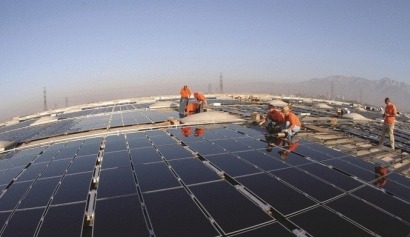
The feed-in tariff was launched in spring 2010, designed to offer returns of up to 8% to homeowners looking to generate their own renewable electricity – tax free, index linked, and guaranteed for 25 years. No surprise then that we’ve seen over a quarter of a million domestic solar installations go in under the scheme, totalling over 1.3GW installed capacity. Two years later, the tariff is offering the same return as it did when it was first launched – yet the market is stagnant. Why?
Whilst actual rates of return are no longer exceeding Government’s target range to the same extent as last year, a high level of consumer confusion around solar PV and the feed-in tariff may be playing a significant role in the drop off in the number of installations. The last six months have seen a stream of headlines about “drastic cuts,” an “illegal consultation,” “legal wrangling,” “huge job losses” and “strict energy efficiency requirements”. However, while the industry undoubtedly went through a difficult time, these headlines obscure a more important truth.
Thanks to drastically falling costs, solar PV remains one of the best investments around, which shields customers from rising energy bills and generates an income to boot, while helping fight climate change and strengthen energy security.
“Around a quarter of the UK’s aging power generation capacity is due to close over the coming decade. We must cut our dependency to fossil fuel which we have no control over its security of supply or price. Solar PV can offer the clean, affordable and secure energy that we need for the future of the United Kingdom. We see investing in clean and green energy as a national duty,” says Reza Shaybani, Chairman of the British Photovoltaic Association.
Nevertheless, there is also concern that the slip back into 'double-dip' recession is suppressing demand from worried consumers.
In response to these challenges, the four major trade associations representing solar PV in the UK have issued a statement reiterating the facts about solar power and the feed-in tariff:
“Solar PV still offers attractive returns for consumers, in excess of many alternative investment products. Improving consumer understanding of solar PV and the feed-in tariff scheme is likely to be key to restoring healthy uptake levels. We are pleased that the policy framework is now on a more stable footing and are optimistic that this will signal a new dawn of consumer confidence in the microgeneration sector,” comments Dave Sowden, Chief Executive of the Micropower Council.
“There is no financial explanation for the low installation levels we’re currently seeing. The main reason seems to be a lack of clear information for the public – an informational deficit which industry is today seeking to redress,” concludes Paul Barwell, Chief Executive of the Solar Trade Association.
It is hoped the concerted effort by the four trade associations to raise public awareness of the benefits of solar PV will plug this gap.
For additional information:

